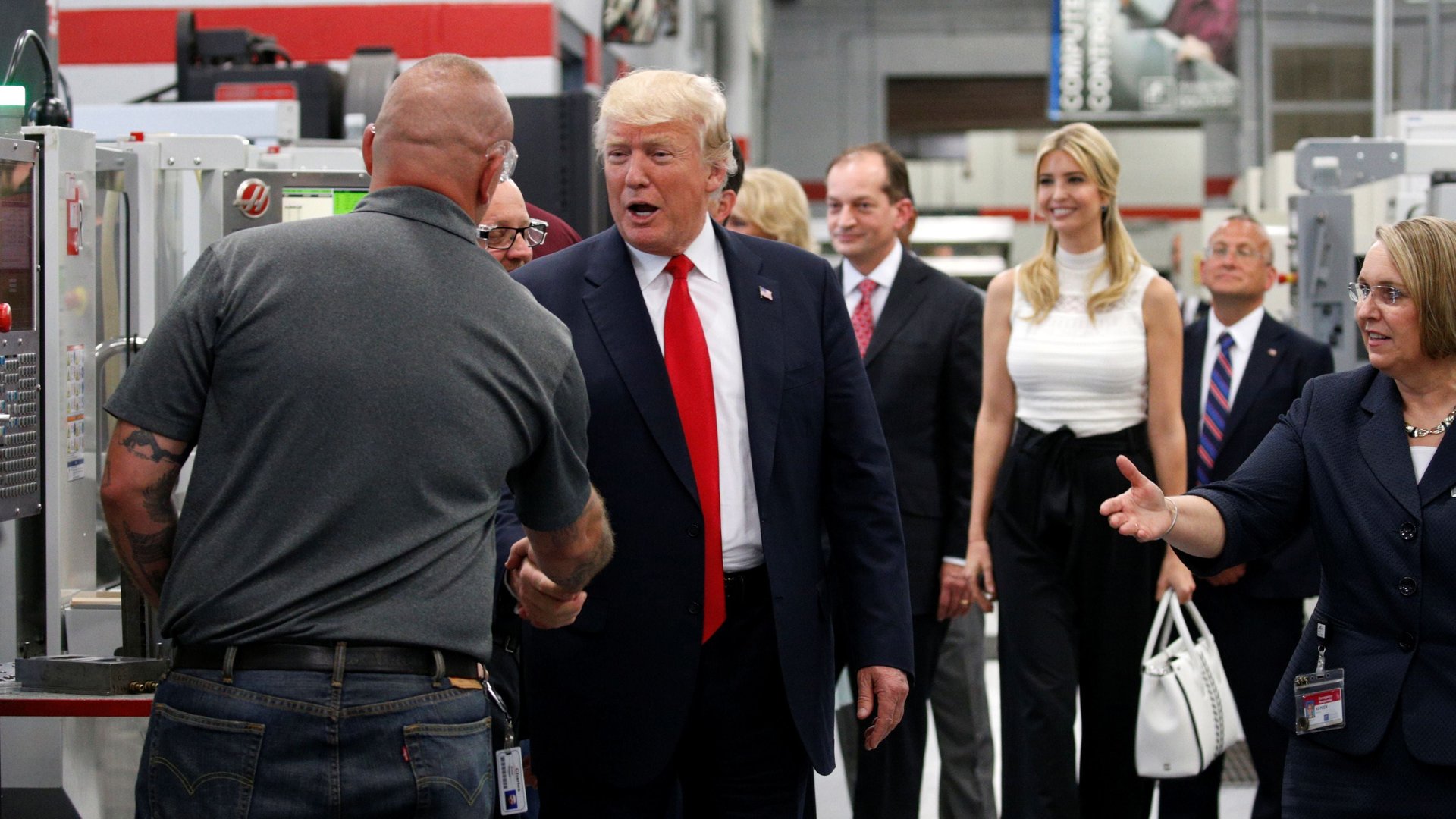What you should know about apprenticeships, Trump’s answer to the skills gap
Trump’s proposed federal budget would cut job training programs by 40% and reduce other types of workforce training programs, such as financial aid for college students.


Trump’s proposed federal budget would cut job training programs by 40% and reduce other types of workforce training programs, such as financial aid for college students.
But this week, which the White House has dubbed “workforce development week,” Trump expressed support for at least one workforce development initiative. On June 15, Trump signed an executive order that he said would “expand apprenticeships and vocational training to help all Americans find a rewarding career, earn a great living, and support themselves and their families and love going to work in the morning.”
That broad-picture promise sounds great. Here are the details.
What is an apprenticeship program?
Registered apprenticeships are administered by a special office within the US Department of Labor in conjunction with state agencies. They typically involve a combination of mentorship while at work and classroom instruction, usually provided by a community college, over one to six years depending on the type of entrepreneurship. On average, apprentices earn around $30,000 per year during the process, though wages may increase over the course of their education, as they become more skilled. At the end of the program, the apprentice receives a certification.
Companies can also set up non-registered apprenticeship programs, which many companies, such as Adobe, have done.
Does anyone think apprenticeships are a bad idea?
Not really. Both Democrats and Republicans have advocated for the expansion of apprenticeship programs. Former Republican president George H.W. Bush proposed a youth apprenticeship program in 1992, writing that “the time has come to strengthen the connection between the academic subjects taught in our schools and the demands of the modern, high-technology workplace” (Congress voted against it). Former Democratic president Barack Obama, who set a goal to expand apprenticeship programs in 2014, called them “opportunities that give workers the chance to earn higher-paying jobs, even if they don’t have a higher education.”
Do apprenticeships work?
By definition, apprenticeships link education with skills that are in demand, and evidence suggests they are effective in terms of wage and job outcomes. A labor department-sponsored report by Mathematica Policy in 2012 found that participants who completed apprenticeship programs earned an average of $240,037 more in wages over their careers than similar nonparticipants. According to a 2016 White House statement, 87% of program participants land jobs after completing their programs.
How many people participate in apprenticeship programs?
Not many. Only about 500,000 people enrolled in registered apprenticeship programs in the US, including an apprenticeship program run by the military. That’s only about 0.3% of the total US labor force, which according to a 2014 report, is much less than the share apprentices make up of the labor forces of, for example, Canada (2.2%), Britain (2.7%), Australia, and Germany (3.7% each).
If apprenticeships are so great, why aren’t there more of them in the US?
Part of the problem is getting employers to adapt the system. “People think it’s all about unions or all about construction,” says Burt S. Barnow, a professor of public service at George Washington University. “Those can be factors, but they don’t have to be.”
In the US, the apprenticeship model is most commonly used in the electrical, plumbing, carpentry, and construction professions. In other countries, they’re used in a wider range of industries. “In Germany you have a situation where you can get tax accounting apprenticeships” says Robert Lerman, a fellow at the Washington, DC-based think tank the Urban Institute, and the founder of the American Institute for Innovative Apprenticeship. Lerman says expanding apprenticeships in the US is partly a matter of stigma, which he considers to be unfair. “You still have a lot of organizations uncomfortable with moving more toward a work-learning model than a degree model,” he says. “There’s a belief that parents won’t accept it.”
Is Trump actually expanding the apprenticeship program?
Not according to his budget. The Obama administration dedicated $90 million to apprenticeship programs, the same amount that’s in Trump’s proposed budget.
Then what does Thursday’s executive order do?
Trump said the executive order will “be removing federal restrictions that have prevented many different industries from creating apprenticeship programs.” The executive order doesn’t refer to specific restrictions, but does order the Labor Department to create industry-recognized apprenticeship programs, which involves determining how third parties such as non-profit organizations and unions can provide recognition to apprenticeship programs.
Is that important?
Depends who you ask. Companies are already free to start apprenticeship programs outside of the government’s registered apprenticeship program. “If an employer thinks that the government programs are too strict or burdensome, the firm can set up its own program that is not registered,” says Barnow of the idea that the current process is burdensome.
Lerman says reducing the requirements for registered programs might make a difference in the number of employers who adopt them. “I’m not saying [regulations] are the main driver of the low apprenticeship numbers in the United States,” he says. “But I think we need to do everything we can in terms of streamlining the process.”